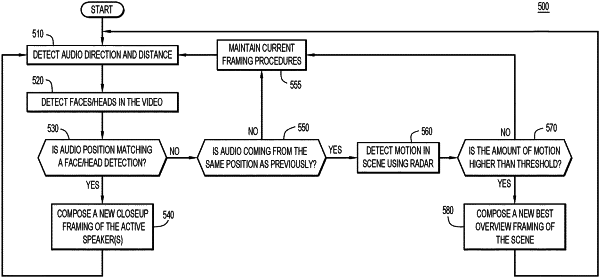| CPC H04L 65/403 (2013.01) [H04L 12/1813 (2013.01); H04L 65/60 (2013.01); H04L 65/61 (2022.05)] | 20 Claims |

|
8. An apparatus comprising:
a network interface configured to provide network connectivity;
a camera configured to capture video in an environment of the apparatus;
one or more microphones configured to capture audio in the environment of the apparatus; and
a processor coupled to the network interface, the camera, and the one or more microphones, the processor performing operations comprising:
obtaining a video stream and an audio stream associated with one or more participants in a room, the one or more participants participating in an online conference session;
composing a framing that focuses on a speaker of the one or more participants based on analyzing the video stream and the audio stream to identify that audio is emanating from a first location associated with a face or head of one of the one or more participants;
detecting a potential error in the framing based on determining that the audio is emanating from a location other than the first location;
determining whether the potential error is an error by determining an amount of motion in the room in response to the determining that the audio of the speaker is emanating from a location other than the first location;
when the amount of motion is lower than a threshold:
contradicting that the potential error is an error, and
maintaining the framing based on the contradicting that the potential error is an error; and
when the amount of motion is higher than the threshold:
confirming that the potential error is an error, and
composing a different framing based on the confirming that the potential error is an error.
|